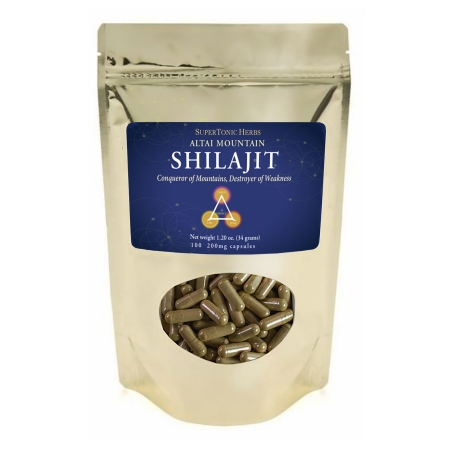Shilajit is a highly renowned Rasayan in Ayurvedic medicine. A Rasayan promotes the health of body, mind and spirit.
Well-known in many civilizations over millennia. Its traditional Russian name is Mumiyo, and similar exudates are found in the high Rocky Mountains, called Medicine Rock by the Native Americans. It was used by ancient Egyptian and Chinese physicians.
In the highest reaches of the world’s mountain ranges, a black, tarry substance seeps from fissures as the rocky strata expands in spring warmth. Long ago, mountain lions and monkeys were seen climbing up the dangerous crags to eat this black exudate. In time, India’s Vedic Sufis took it, noting that it gave them great power. They called it shilajit; Conqueror of Mountains, Destroyer of Weakness. This is quite an apt title, as we will read ahead.
Modern research has confirmed shilajit is composed of the broken-down remains of entire ancient eco-systems; dense primordial forests, animals and insects, aquatic systems, fungal kingdoms, etc.
As ecosystems live and die, their leftover structures are cleaved by elements and returned to the soil, where these humic remains continue breaking down over long periods of time, into extremely small molecules called humic acids: densely nutrition-packed molecules that can be taken-up by plant roots, representing the primary food system for forests. Much of this humic material exists in peat bogs, wetlands, and subterranean strata, once at Earth’s surface, where forests had thrived. One such humic resource is Leonardite, the remains of a primal rainforest encased in the Earth and mined at the now-state of Montana. Leonardite and other, similar humus-rich substances are very beneficial for agricultural soils.
Shilajit is unique, found only in mountain strata above 10,000 feet. Analysis finds shilajit is much older than peat-bog humic remains, possibly the result of humic breakdown over millions of years of ancient rainforests that had thrived at these locations before the mountains rose; we’re talking about a long time… But this is also significant, as these eco-systems appear to have been entombed inside the rocks, and thereby preserved from infiltration of new plant detritus.
These primal eco-systems were preserved, continuing to cleave into the smallest humic molecules in nature, creating an ultra-concentrate of the complete spectrum of nutrient and mineral elements, resulting in a broad-spectrum of therapeutic agents for our overall health. Some studies allude to the full elemental profile ~ all approx. 125 known elements ~ may be present in shilajit.
Take a look at all products from RDT Herbs



